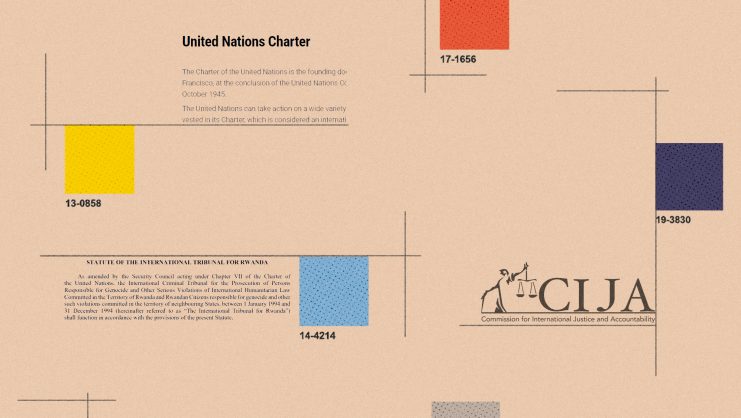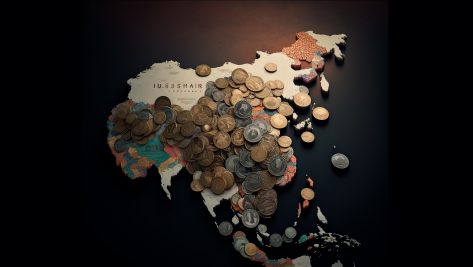Problems in rich countries—combined with troubles in emerging countries caused by the raw materials crisis—have contributed to the freezing of global economic growth. Major reasons for this situation include China’s economic transformation—which favors domestic consumption over exports—and the failure of political leaders in major countries to solve the problems that afflict their economies. These problems include the challenge of maintaining retirement pension systems for an aging population, rising income inequality caused by the global economic crisis, and the increasing economic and employment insecurity faced by low-skilled citizens. The dissatisfaction felt by a significant portion of the population in developed countries has led to an arduous crisis of political legitimacy and the emergence of populist, isolationist, and xenophobic movements that oppose economic openness in the hopes of preserving their identity and material welfare.
This shift towards protectionism is exacerbating the contraction of international trade and decreasing economic efficiency, thereby reducing the number of opportunities to generate competitive advantages. The obstruction of commercial exchange will hamper GDP growth worldwide by preventing resources from being allocated efficiently in the global production value chain. In this context, Donald Trump’s victory and the United Kingdom’s decision to leave the European Union are factors that represent a radical new change in the global economy. Interest rates are starting to rise. The aging of the population is putting the squeeze on pension systems and increasing the dependency ratio, giving rise to the need for additional savings and the possibility of higher taxes, which would stifle consumption and destroy jobs.
In this context, the world increasingly belongs to the emerging countries, which for several years have growing faster than their advanced counterparts. Less-developed countries accounted for 53% of global economic production in 2015, and by all indications there will be no European countries left in the G7 by 2050.
However, emerging countries face a serious problem: a future interest-rate hike in the United States. Trump’s economic policy calls for more public spending and lower taxes for individuals and businesses, which translates into a larger deficit that will have to be financed through the bond markets. If the country issues a large amount of debt, it will need to pay an attractive interest rate. A rate hike will cause capital to gravitate toward the US, where profitability will be higher. And that’s not all: as the euro depreciates and the dollar increases in value, emerging countries will have less access to financing. These countries, whose public bonds are denominated in dollars, will suffer as this currency appreciates and it becomes more difficult to pay their debts. In other words, emerging countries face several blows: first, they won’t be able to sell as much as they would like to in the US; second, the products they sell will decrease in value as raw-material prices fall; and finally, unable to obtain financing, they will struggle to pay their foreign debt.
A wave of populism and trade protectionism is washing over the international landscape.
China’s expectations
It is in our interest for China to do well, to sell, and to increase its per capita income, because if China grows, it will purchase more products from advanced countries. Economics is not a zero-sum game. If the US prevents the entry of products from China and Mexico, in the short term this may help the US economy to grow, become richer, and create jobs, but in the long run everyone will be worse off.
China’s transition is occurring in parallel with the evolution of the emerging countries, the political shift towards populism, and the monetary and banking metamorphosis. After the US, China is the world’s second-largest economy, followed by Japan and Germany. Five years ago, the Communist Party of China decided to change the country’s economic model, de-emphasizing exports and industrial production in favor of a service-based pattern: importing more to provide more goods to citizens, exporting less to keep more production in the country, and developing a middle-class society that boosts domestic consumption. This shift to a new production model entails a difficult transition that has caused China’s economic growth, which had maintained an average rate of 10% over the last 30 years, to slip to a much lower 6%, which translates into the consumption of fewer products from the elsewhere in the world.
In this sense, China has seen a decrease in international trade. The Asian giant has adopted a policy of devoting more resources to increasing the production of consumer goods and boosting the service sector, while at the same time reducing exports. This policy has resulted in lower economic growth, which is dragging down other emerging countries, especially those which produce raw materials. China buys 60% of the iron and 45% of the copper produced worldwide, so the countries that produce these materials are being adversely affected by China’s growth slowdown and new production model.
The price of oil is expected to hold steady at the current level of around $55/barrel due to falling demand caused by global economic stagnation. At the same time, crude oil stocks have increased due to high output in the US and Russia and the rise of producer-exporters like Iran and Iraq. The drop in oil prices is causing a fiscal imbalance in oil-producing countries, which have been forced to adjust their tax systems, cancel investment projects, and endure the bankruptcy of various companies that directly or indirectly provide services to the oil industry. Emerging markets are cooling down and facing a harsh new reality. Brazil, Russia, and the two largest African economies—Nigeria and South Africa—are all in recession. Another important case is Venezuela, whose government has been contending with a huge fiscal imbalance, a colossal currency devaluation, and high inflation; in addition, the country is on the brink of defaulting on loans from China and the credit rating of the Venezuelan state-owned oil company has been downgraded.
Efficient resource allocation and the international division of labor increase growth and improve the situation of the economy as a whole.
Spain: above average
Despite the sluggish growth of the hibernating global economy, Spain has miraculously managed to grow by 3.2%, well above other advanced countries and the EU average. Although part of this growth is due to tax cuts—which mean more disposable income and consumption for Spanish households—exports are also driving this process. Thanks to these developments, Spain should have enough tax revenue to cover its public spending.
Spain is a country where people want social benefits that amount to 42% of GDP while paying only 38%. This difference leads to an increase in debt. As a result, Spain is the only EU country with a deficit of more than 3%. Although the country has managed to reduce its deficit from 12% to 4%, the current figure remains unjustified: growth would allow much more revenue to be collected if the tax system were better designed.
The factors that have helped to increase Spain’s purchasing capacity include oil prices; an expansionary fiscal policy that generates growth through higher public spending; low interest rates that have favored credit and therefore investment and consumption; and the increased competitiveness of exports. During the economic crisis, Spain worked to internationalize its economy. For example, exports of non-tourism services—consultancy, auditing, engineering, utility management, banking, insurance, and hotel services—have grown at a rate of 6% annually.
Spain is doing well, therefore, because it is exporting more and consumption is strong. Social security enrollment has increased, although unfortunately some of the jobs created are temporary. In addition, some revenue is lost because of social-security subsidies for new enrollees on permanent employment contracts.
Spain is a country where people want social benefits that amount to 42% of GDP while paying only 38%.
Adjustments in foreign trade, banking, real estate and unemployment
A lack of political accountability has left the issue of fiscal adjustment unaddressed. If budgets are not balanced, Spain will have a relatively high deficit that will have to be funded through debt—with ever-higher interest, because rate hikes and higher financial costs for the state are the trend going forward.
Accountability is necessary if Spain is to adopt a budget that will lead to a sustainable economy. Growth is up this year, but perhaps the economy shouldn’t grow quite so much. Perhaps taxes—especially the value-added tax (VAT)—should be raised instead. With an average rate of 10%, Spain’s VAT is among the lowest in the EU, which has an overall average of more than 15%. Denmark, for example, has an average VAT rate of 25% for all consumer products, and the country applies social policies for disadvantaged classes that have difficulty paying taxes. Finally, in order to ensure that social security contributions can cover pension costs, Spain needs to get back to having 20 million people employed.
© IE Insights.











